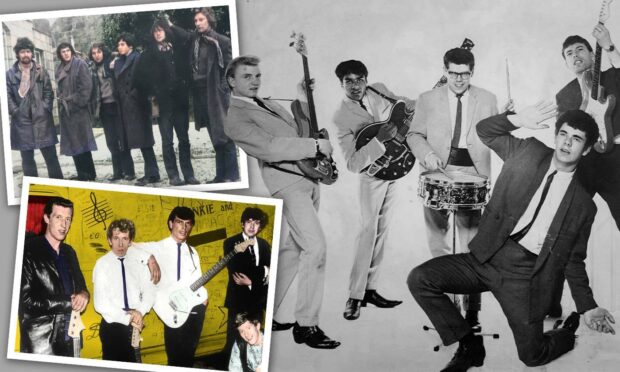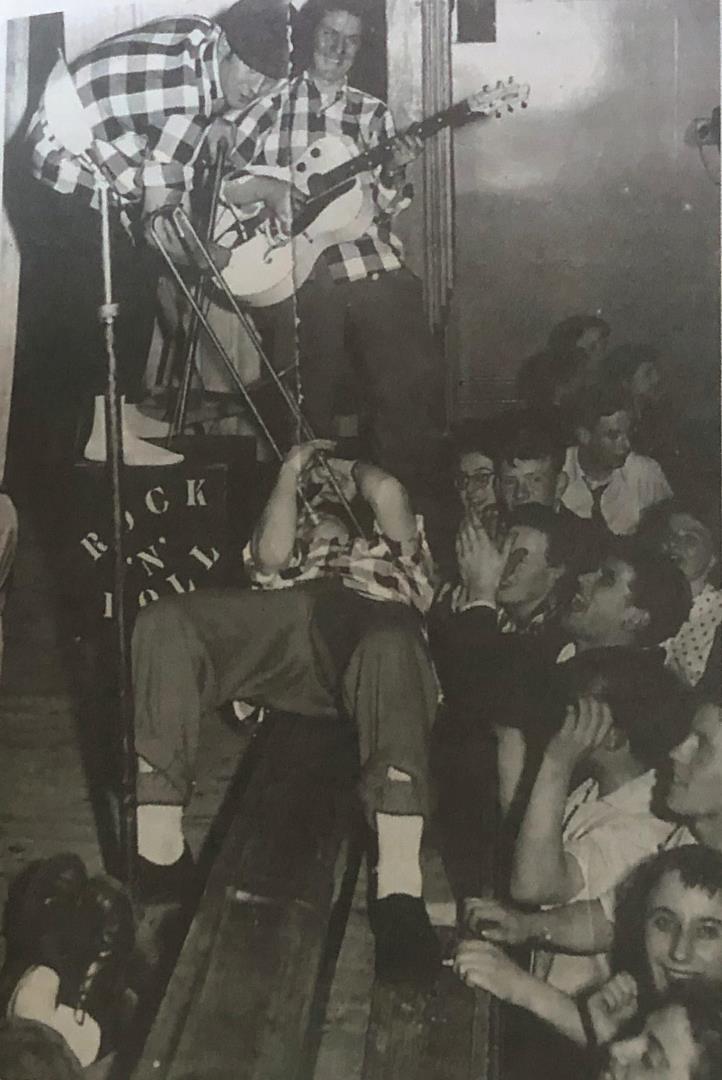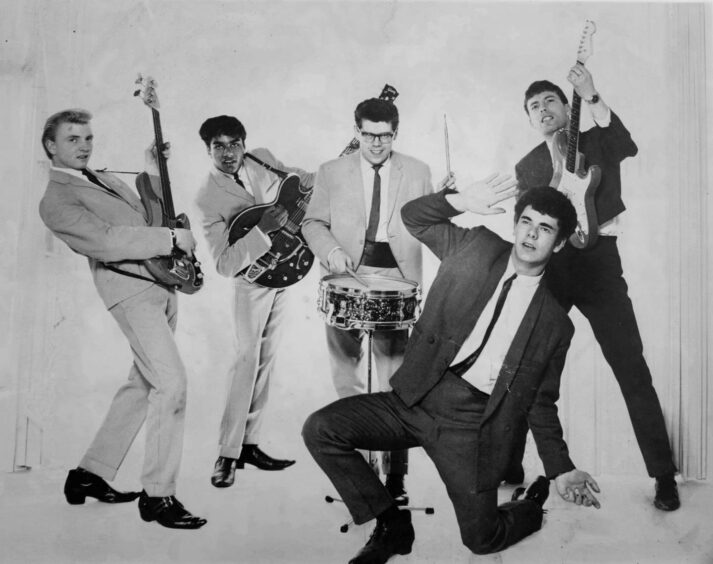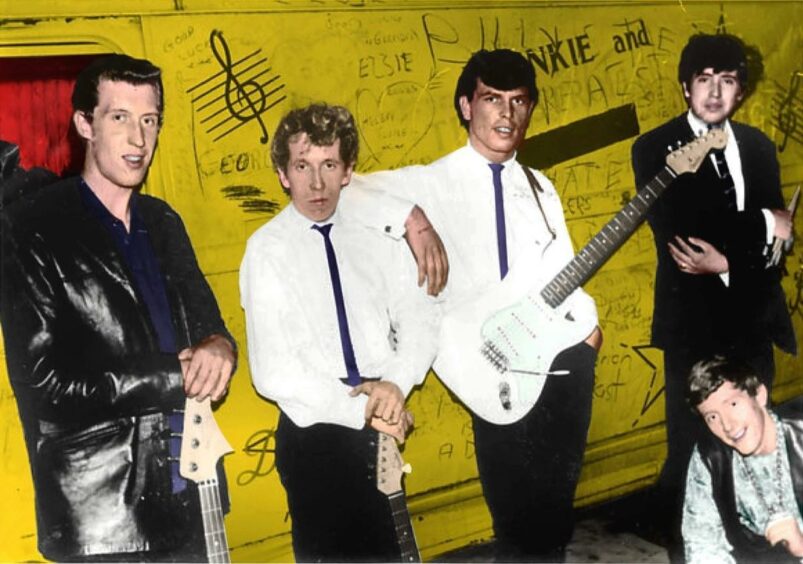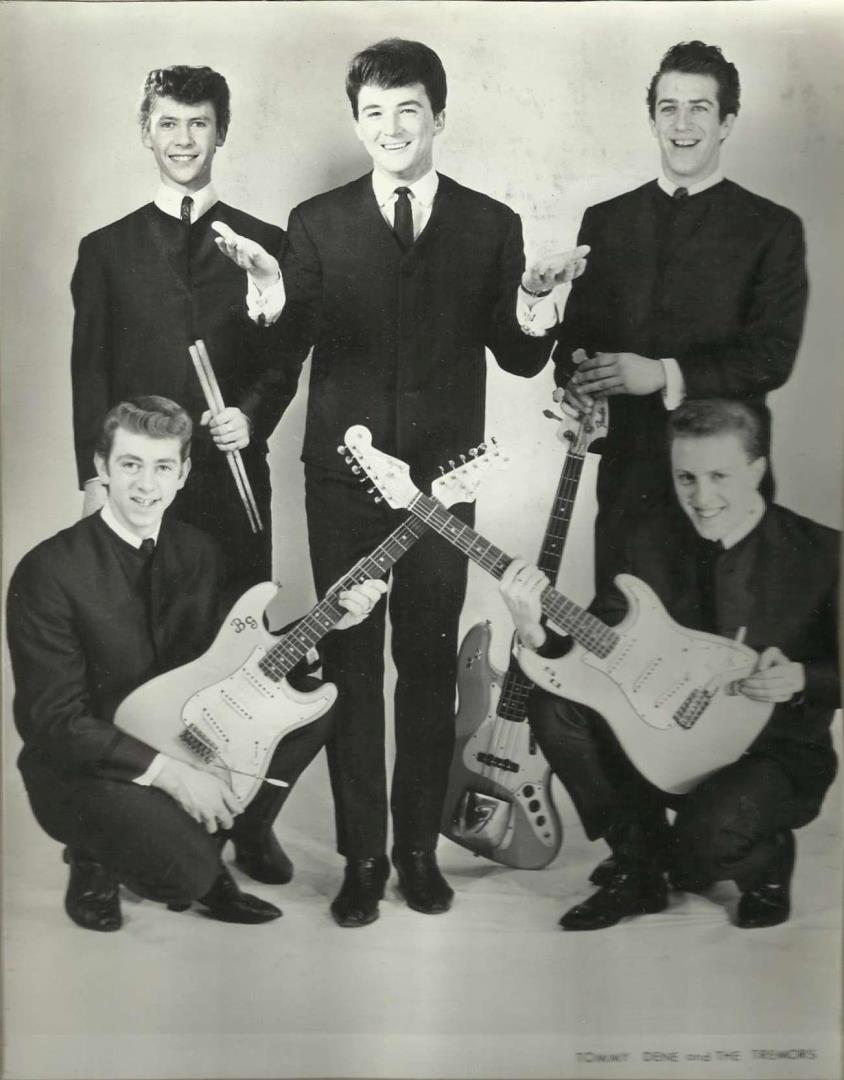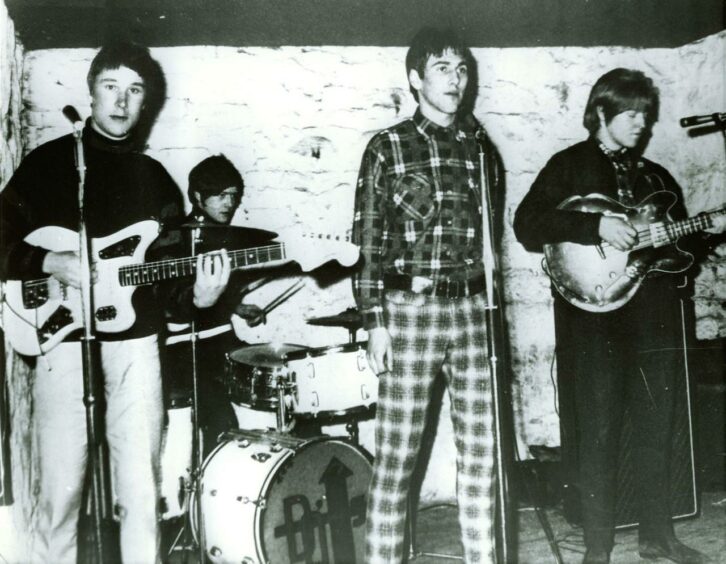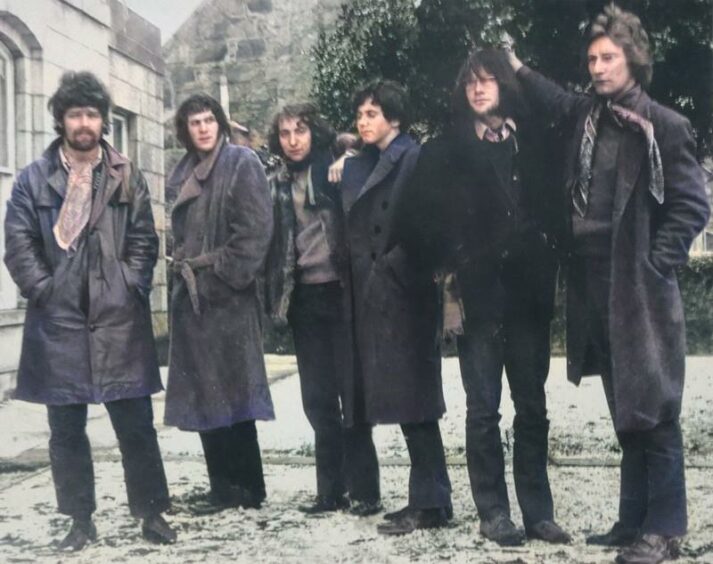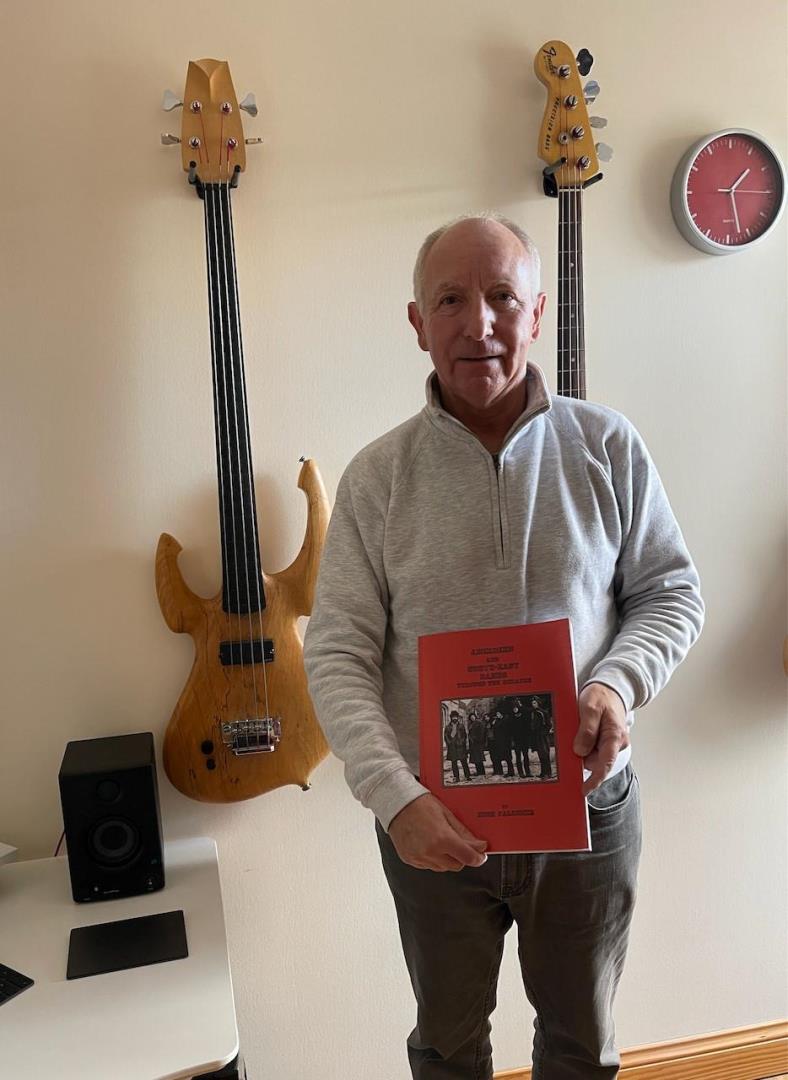A new book charts the sights and sounds of the Aberdeen music scene from the heady days of the 1950s to the 1980s.
Its bands, its fashions and its attitude is chronicled by Hugh Falconer, whose own musical journey started when he picked up a bass guitar aged 14.
These local legends brought entertainment to generations including one Aberdeen band that replaced the Fab Four in Hamburg in 1963.
Hugh said: “After completing some family history documents, I had the idea of doing something with my extensive photo archive of Aberdeen bands, and during lockdown it seemed to be the time to start something new.
“I meet up every week with a number of musicians who are in their seventh decade, and our band of 12 was reduced three years ago when two died suddenly, leaving the rest of us feeling rather aware of our age and that our stories will soon start to be lost.
“There is a Facebook group (Music Mates) run by a former Aberdeen musician Sandy Willison, which now has over 700 members, who regularly share their memories of playing, so I thought I would try and produce a book to remember the musicians who brought entertainment to generations of people in the north-east.
“I started playing in the late 1960s, and have great memories of the musicians of that time, many of them went on to perform for a number of decades so it seemed fitting to try and capture some of the images and stories behind many of the bands and musicians of that period.
“It soon became clear that I needed to put some boundaries on the period covered, so I decided to make the focus 1950-1980, with some early history, and recognise the bands who started in the 1980s, and continued.”
The ’20s, ’30s and ’40s
Aberdeen and North-East Bands Through The Decades starts with a brief look at the city’s vibrant music scene in the 1920s, ’30s and ’40s.
The book moves to the 1950s, including a look back at one of the earliest rock and roll bands, which was Eddie Watson and His Alligators from Aberdeen.
Originally a skiffle band, they soon changed their sound after being heavily influenced by Bill Haley & His Comets after Rock Around The Clock swept the globe.
Eddie Watson and His Alligators changed the local dance scene and paved the way for the big rock bands of the ’60s, like Johnny and The Copycats.
The Buckie band were quickly signed to Moray promoter Albert Bonici, who owned Two Red Shoes in Elgin and brought The Beatles to Scotland in 1963.
Iain Lyon, Rob Lawson, Ali Ewen and Billy Cameron were playing instrumental music before John Stewart came along to join them on vocals.
Hugh said they were one of the most successful Scottish bands of that time and secured a string of prestigious bookings across the UK with the backing of Bonici.
Then there was The Diamonds.
This ’60s outfit featured Brian Nicolson on bass, Ed Riley on rhythm guitar, Freddie Ellis on drums, Jim Swanson on vocals and Ian Taylor on lead guitar.
The band enjoyed a short residency at the Top Ten Club in Hamburg in 1963 which was where the Fab Four performed 92 times in 1961.
The Strollers were another band that spent time in Hamburg.
The band secured their bookings in Germany following a successful audition at the Caird Hall in Dundee and set off in May 1964 in their trusty yellow van.
The band played a farewell gig at the city’s Beach Ballroom for their local fans.
Probably the best known and most successful of those early bands in Aberdeen featured in Hugh’s book was Tommy Dene and The Tremors.
The band originally formed in 1962 and was fronted by the charismatic Tommy, who went on to have a lengthy career in the music industry.
The ’70s and ’80s then created a perfect musical bridge from the rebelliousness of the ’60s and The 30 Footers were the most colourful Aberdeen band of the era.
They formed in 1979 with an impressive line-up of musicians and original numbers and enjoyed early success, including performing on Grampian TV.
Hugh said: “When researching the early period 1920-30, it soon became clear that despite little evidence remaining, Aberdeen had some very special bands.
“For example, the first resident band at the Beach Ballroom in 1929, The Embassy Band, had won national competitions on a number of occasions, beating the musicians from Glasgow and Edinburgh.
“Several things came to mind when writing the book: one was the vast number of bands, and places to perform in the 1960s, associated with this was the number of very talented musicians who were performing.
“Also, in the 1950-60, period musical instruments were very hard to come by, as electrification of bands was in its infancy, and very expensive.”
Music background
Hugh got started in music at Decca Studios in London in 1969 where he worked with The Moody Blues, John Mayall and bandleader Edmundo Ros.
This was the start of a very colourful career that spanned a number of professions including helping set up Northsound Radio in 1981.
He has played with some of the best musicians in Aberdeen and was the bass player for successful local bands including Jock, Hedgehog Pie, and Super Klute.
So what were Hugh’s own favourite bands growing up?
“I can split this into two sections: bands I listened to, and bands I played in,” he replied.
“The bands that influenced me in the 1960s were The Rhubarb, Mr Fantasy, Albert Fish, The Beathovens and the Lemon Soul.
“The bands I played in that gave me the most satisfaction were Another Camel, Levi, Jock, and Super Klute – all had very different musical styles, but each with fantastic musicians and great followings.
“I am sure the book will be well received as a visual factual history of many of the Aberdeen and north-east bands.
“It is already selling well with many of the musicians.”
Gordon Lemon
Hugh’s book is sure to bring back fantastic memories for music fans.
But it also begs the question: who was the best of the lot between 1950 and 1980?
“This is a hard one,” said Hugh.
“It depends on the period in question, but the late 1960s band The Lemon Soul were very special.
“This band introduced Aberdeen to the best soul music of the 60s.
“And I think they were the only Aberdeen band to be selected to perform on the TV talent show Opportunity Knocks during that period.
“There have been a number of fantastic vocalists in town, but few to rival the unique voice of Gordon Lemon.
“I had the pleasure of playing with Gordon in a number of bands.
“That was very special.”
Hugh’s new music book is available now on Amazon and anyone who has photos of Aberdeen bands through the decades can also contact him at www.hughfalconer.co.uk
You might also like:
Shirley Bassey: Ultimate Bond girl found her voice again in Aberdeen
